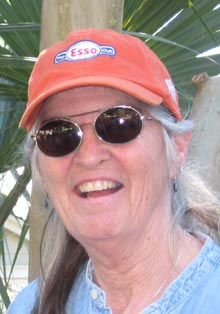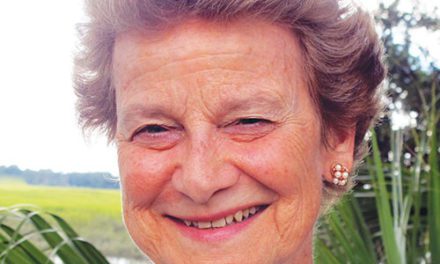By Laura Lee Rose
When you start a journey there is always the first step. Then there are tasks to accomplish. Along the way we meet new challenges and opportunities. As we get to know our landscapes we change, adapt, weed out and add more.
Best landscape practices support sustainable landscapes. Leading by example, others will take notice. Precious natural resources may be available now, but they aren’t limitless. How can we do our part to help conserve water, soil, air quality, and delicate ecosystems?
It all begins with the soil. The sun 93,000,000 away sends light energy to green plants. All the creatures above and below the soil benefit from the resources provided by photosynthesis. Some of them feed directly on plants, while others use the carbohydrates, oils, and other nutrients from plant residues. Microscopic and invertebrate organisms decompose the organic matter and recycle nutrients into humus, which in turn supports plant growth.
Learning about the dynamic relationships of plants and animals of the Lowcountry invites a sense of belonging and a desire to preserve and protect that ecosystem. The energy from the sun drives the photosynthesis of the marsh grass. You all learned the name when you moved here. It wasSpartina alternifolia. Unfortunately, names change as genetic information is uncovered. The new name, like it or not, is Sporobolis alterniflorus.
Marsh grass is a perennial. It grows quite tall in one season. After flowering and setting seed the stems die back. The energy to re-sprout is held in reserve during the winter in fleshy rhizomes under the mud. During the winter months the dormant grass is agitated by wind and tides; stems float and raft together as wrack. It gradually breaks down into smaller and smaller particles. This is a primary food source for many larval fish and crustacea like shrimp and crabs. The point being that what we do in our landscapes and lawns affects a much larger community. Good landscape planning is essential: the plants we select, how and when we fertilize or water our lawns, and careful consideration before or if applying pesticides. Even if you don’t live on a tidal creek, river, ocean or marsh, it’s not very far away. Beaufort County is 50% saltwater estuary.
Landscape design combines art and science, extending living space beyond the indoors in an aesthetically pleasing form. Designing a landscape is an art. However, to have a landscape that is not only visually pleasing, but is also functional, requires science.
Plan before you plant; consider what soil, water, light, drainage, and microclimates are on the property. Site analysis is the first consideration of landscape design. A plat of the property is helpful to get property lines and orientation to the sun. Usually a North arrow indicates that. You also want to follow local ordinances for setbacks and consider any restrictions or covenants that may apply. Locate all overhead and underground utilities: power, water, gas, sewer or septic system. Next, place all buildings, hardscape, and existing trees on your plan. Indicate windows, doors, hose bibs, and areas of sun/ shade, slope, and/or drainage onto and off the property.
Select the right plants. It is easier to have plants that fit the landscape than to re-engineer the landscape to suit the plants. Choosing the correct plants for the soil, light, and water available will go a long way in sustainability. Plants can be multifunctional. Trees and other vertical elements can be used to create or frame views. They are also useful to screen unwanted views and provide shade. Choosing trees and shrubs for their natural size and form reduces the amount of pruning required.
I will argue that there is a native plant to fit every niche and microclimate of your property. There are several different conditions that can exist in a single landscape. The front yard may be high and dry, while the backyard is low and wet. There may also be differences in light. Different sides of the home receive differing amounts of light. The amount of light received in an area is a very important consideration in choosing plants for that area. Nutrient availability and pH of the soil may vary throughout the landscape.
Wherever possible, preserve existing trees, shrubs, and herbaceous native flora to provide fauna the host plants, cover, nesting materials they need to live and reproduce. Protecting biodiversity, think about plant communities rather than individual plants.
Before starting a landscaping project there are going to be costs involved not only the plants, tools, and mulch, but also, what is the cost of maintenance going to be? Sustainable landscaping should be low maintenance; less lawn, less mowing, watering, fertilizing, pesticides, and pruning. Ground covers and mulch provide a finished look to a landscape. Choose mulches that are locally and sustainably produced. For instance, pine straw and pine bark compost are by-products of the timber and paper industry. Both are locally sourced and inexpensive. Hardwood mulch is a by-product of tree trimming and would otherwise go to the landfill.
The returns are a little more abstract, like improved quality of life – both yours and the environment’s. Or there might be the joy of having wrens and woodpeckers at the suet feeder, knowing that they are also providing pest control by eating insects in the garden.
An additional way to design sustainably is to prevent stormwater from leaving your property by installing a rain barrel, planting buffers, and/or a rain garden. Rainfall can be captured or slowed down by all these practices. Harvesting rainwater in a barrel or cistern is a good way to reduce stormwater runoff and to save water for a dry spell. If you have gutters on your house, you may be able to collect 55 gallons of water during a 1-inch rain event by connecting a downspout to a rain barrel or cistern.
Plants provide us with many Ecological Services starting with oxygen – necessary for all life. They also trap carbon dioxide from the air and make it into plant parts. That carbon is tied up in not only the leaves, branches, and roots, but as organic matter decays it becomes humus, which is a very stable long carbon chain. We plant trees for shade, but the branches and leaves feed birds and insects, as well as other vertebrates and invertebrates. The roots hold soil and help to prevent erosion.
Keep nature in mind asyou design, and not as an afterthought.
For more information on Sustainable Landscaping visit Clemson Home and Garden Information Center https://hgic.clemson.edu/https://hgic.clemson.edu/factsheet/carolina-yards-an-overview-of-sustainable-landscaping-practices/










